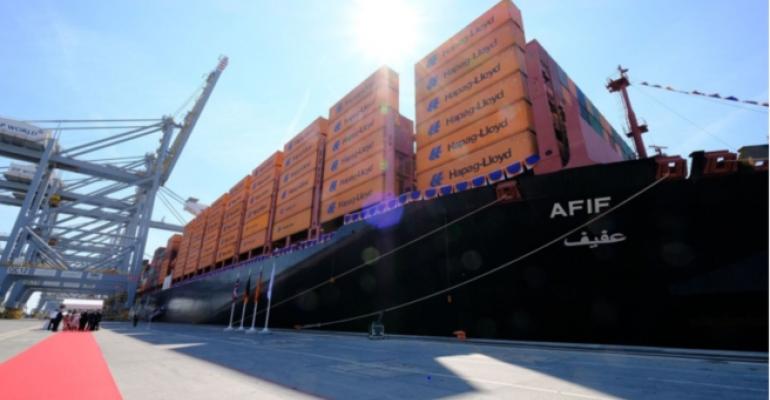As the company pointed out, the liner shipping industry has changed significantly. It is at a turning point. Hapag-Lloyd, which merged with UASC in 2017, and prior to that with CSAV, is itself more than twice as large as it was five years ago, in terms of capacity.
The company’s five-year plan comes with three key targets – quality, profitability and selective global growth.
“First, we want to be number one for quality in the industry,” Nils Haupt, senior director, corporate communications, tells Seatrade Maritime News. “As we believe that size is no longer the name of the game – we don’t expect to see any big mergers in the future – so we believe we have to differentiate ourselves on quality, and so set ourselves this target.”
Hapag-Lloyd is developing 12 criteria “where customers will be able to clearly see and measure our quality and how it is developing”, he says. “We are currently working on the clearly defined 12 quality criteria – we will make the first of them public very soon and are confident we will have all 12 in place by mid or end 2020.”
Anyone will be able to access the website and to see the weekly performance within each of these criteria – “and we can see where we need to improve and what we have achieved”, he says.
“A lot of IT planning and resources are involved in this – we are putting a lot of staff and investment in to really prepare. We will be leading in the industry in this area.”
Second, profitability. Hapag-Lloyd’s 2018 operating profit before interest and tax (EBIT) increased to €443m in 2018, from €411m in 2017.
“In our industry, not everyone can take profitability for granted,” says Haupt. “We want to be profitable throughout the cycle. In 2018 we were the most profitable line in the industry.”
Thirdly, Hapag-Lloyd is looking at markets where it can expand. “We want to have global reach but we want to focus on growth markets – for example, Africa, where there are still some areas where we can still grow. We have started new business in east and West Africa and that is very promising. We will be looking at markets where we are strong or where there is potential.”
Read more: Hapag-Lloyd invests in growing East African market
Hapag-Lloyd is also preparing for January 2020, when the IMO’s low-sulphur rules kick in. The majority of its fleet will take the option of using compliant fuel; ten 13,000 teu Hamburg Express class are being retrofitted with scrubbers.
And then there is the third option – using LNG. Hapag-Lloyd is to spend $25m retrofitting the 15,000 teu Sajir to operate with LNG; the conversion, to be carried out at the Huarun Dadong Dockyard in Shanghai, will enable the engine system to function with either LNG or low-sulphur fuel oil. The vessel is expected to enter service in 2020 or 2021.
Read more: Hapag-Lloyd inks retrofit contract for containership to run on LNG
“We are the first container shipping line worldwide to be doing this [LNG conversion] and we are doing it as a pilot project to assess whether LNG is feasible to use on more ships,” says Haupt. “We need to look at price, the availability of LNG all over the world and the fuelling process at the port, and we need to train staff. This is a lot of cost and we need to see how it works.”
Copyright © 2024. All rights reserved. Seatrade, a trading name of Informa Markets (UK) Limited. Add Seatrade Maritime News to your Google News feed.


